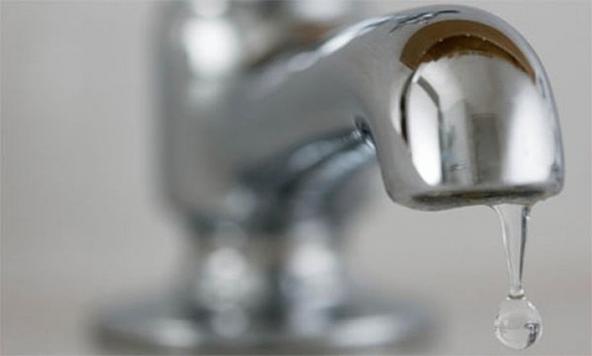 |
|||
| LEAD Action News Volume
13 Number 3, May 2013, ISSN 1324-6011 Incorporating Lead Aware Times ( ISSN 1440-4966) and Lead Advisory Service News (ISSN 1440-0561) The Journal of The LEAD (Lead Education and Abatement Design) Group Inc. Editorial Team: Elizabeth O’Brien, Zac Gethin-Damon, Hitesh Lohani and Shristi Lohani |
|||
|
About Us
|
After speaking by phone with Andrew Kneebone from Cradle Mountain Water and as more information became available about the contamination of the drinking water supply in Rosebery TPEHN put out one more media release: A critical issue about conflict of interest and the independence of CMW
Cradle Mountain Water compiled a comprehensive drinking water risk management plan when they took over water in 2008/09 and they failed to identify any risk from uncapped reservoirs that are used for drinking water supplies in Rosebery. CMW have not accessed any data from MMG for their risk assessment on the exposed reservoirs for emissions from the mine especially from dust. These reservoirs that CMW use to supply reticulated water are part of mine infrastructure. What we have here is a critical issue about conflict of interest and the independence of CMW as a public water authority needs to be publicly scrutinized. The CMW risk assessment needs to be released to the media to see exactly how thorough CMW’s plan was, as it has taken until now for these lead results to be found in drinking water supplies and for the issue of these exposed reservoirs to be revealed. In addition, the No 2 Dam which receives treated sewage,and was formerly a tailings dam, is not the responsibility of CMW but remains under MMG control. According to Andrew Kneebone the waters from the No 2 Dam are pumped through the waste system at the mine then up to Bobadil tailings dam and finally released into the Pieman River. The new proposal is for the waste sewage water to go directly into the Stitt River. CMW are not conducting any research into metal leachates from the No 2 Dam into the Stitt River although they are doing ambient water monitoring. There continues to be a conflicted relationship between CMW and the MMG mine in terms of shared infrastructure and therefore transparency is critical in the current controversy over the lead in drinking water in Rosebery. TPEHN and THMTT want to see action from Workplace Standards and the EPA to investigate all MMG mine’s infrastructure, plant operations and emissions monitoring data that could have contributed to a spike in the lead found in drinking water in Rosebery or as a result of legacy mine pollution. On the same day Kay Seltitzas from THMTT put out their media release: Rosebery reservoirs must be sealed and more water monitoring needed The Toxic Heavy Metals Taskforce Tasmania have today contacted Cradle Mountain Water and asked them when they are going to take action to seal the drinking water supply reservoirs in Rosebery. “Clearly Cradle Mountain Water and the DHHS have failed in their duty of care to provide safe drinking water to the Rosebery community by failing to conduct adequate water quality risk management practices” said Kay Seltitzas “The Rosebery community need to be reminded that in July 2010 Deputy Director of Health Dr Chrissie Pickin advised Rosebery residents not to drink rainwater from tanks, use it in cooking or for making up baby formula because of contamination from heavy metal dust.” (see attached DHHS Media Release from 29 July 2010.) “Yet astonishingly, Andrew Kneebone, from Cradle Mountain Water, during an interview with ABC’s Leon Compton, made a public admission that a couple of reservoirs are not sealed.” “These reservoirs are sited very close to mine operations which are classified as a Major Hazard Facility. These unsealed reservoirs will receive dust emissions from: vent shafts, movement of materials on site, open stockpiles, dried process liquids and solids and unsealed areas.” “CMW should be conducting twice weekly water monitoring on a routine basis as drinking water is being drawn from two sources in Rosebery within an area that a High Hazard Facility operates.” “We have received information that we consider Workplace Standards and the EPA need to act on. An investigation needs to be conducted into No 2 Dam which is the sewage treatment pond and former tailings dam. It needs to be inspected for any infrastructure failures as this dam leaches heavy metal contaminants into the Stitt River. No 2 Dam also has treated sewage water discharged into the Stitt River.” “This is a totally appalling failure of duty of care by the DHHS and CMW towards Rosebery residents who live within an operational mining area that is classified as a Major Hazard Facility. All authorities concerned must take urgent steps to address these public health issues in Rosebery.” said Kay Seltitzas. |
||
|
About
Us |
bell
system lead poisoning |
Contact Us
| Council
LEAD Project | egroups | Library
- Fact Sheets | Home
Page | Media Releases |
|||
|
Last
Updated 04 June 2013
Copyright © The LEAD Group Inc. 1991- 2013 PO Box 161 Summer Hill NSW 2130 Australia Phone: +61 2 9716 0014 |
|||
